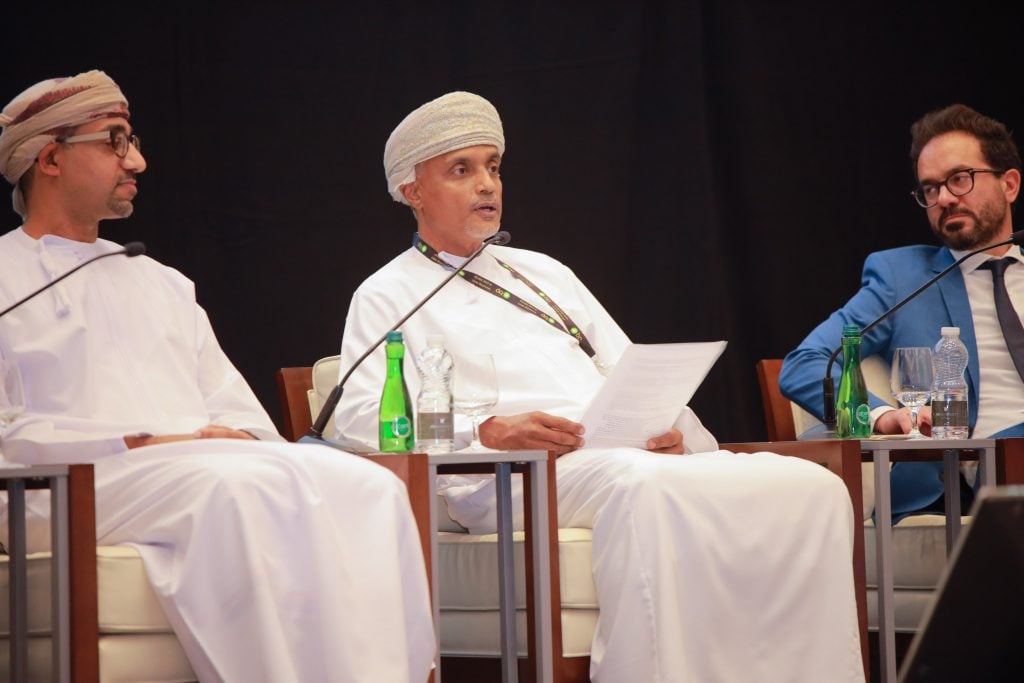The head of the British Oil Company in the Sultanate of Oman, BP Oman, Eng. Youssef Al-Ajili, pledged to continue providing global energy supplies in a safe and affordable manner despite the changes and the gradual abandonment of a number of companies from the fossil fuel industry.
Al-Ajili expected that oil and gas would continue to seize a large share of the global demand for energy, despite the renewable energy targets that governments and companies are heading towards, according to a press interview that was seen by the specialized energy platform.
The company’s president stressed the necessity of balancing energy sources during the coming years, especially in light of the interest of a number of companies to engage in clean energy projects.
balance of energy sources
Youssef Al-Ajili said that the share of oil and gas in the volume of global energy demand by 2050 may range between 35 and 40%.
He explained that BP Oman will continue to meet the global demand for energy like the rest of the companies involved in the industry, but at the same time it will focus its efforts on achieving a balance between energy sources.
Al-Ajili indicated – in an interview he conducted with “Spark” magazine issued by the Youth Committee of the Omani Ministry of Energy and Minerals – that this balance aims to decarbonize the energy sectors and make them more environmentally friendly, in addition to making space to keep pace with the transition towards clean and renewable energy sources by up to to between 50 and 60% of global demand by the same date, according to BP estimates.
The official – who assumed the presidency of BP Oman in 2015, in conjunction with the drop in oil prices – added that the British oil company had the lead in dealing with the energy transition path, especially as it seeks to transform into an integrated energy company, and opened the way for renewable industries, hydrogen and others.
The British Company and the Sultanate
Since the emergence of BP Oman as a major investor in 2007, the company aims to support the Sultanate’s strategic objectives regarding energy security and diversification of its sources, as well as qualifying its local human resources to work through the same track within a program it launched in 2010.
The British Oil Company views the Sultanate of Oman as a vital and strategic partner for the company’s activities and projects, especially since BP has a long history in oil and gas exploration and production in Middle Eastern countries, as the company stated on its website.
The infographic below – prepared by the specialized energy platform – shows the most prominent figures about oil and gas revenues in the Sultanate, during the period from January to March of the current year 2023:

In 2017, the British company began production from the first phase of Block 61, “Khazzan”, while the second phase, “Ghazir”, joined it in October 2020.
BP signed a deal to buy Omani gas in 2018, which will last for about 7 years, while it agreed with the Omani government to explore Block 77 in cooperation with the Italian company Eni in January 2019.
BP Oman and Clean Energy
The British Oil Company announced – in March of last year 2022 – its intention to launch clean energy investments in the Sultanate of Oman, including projects to develop green hydrogen, one of which is close to a final investment decision by the end of the current decade 2030.
The head of BP Oman, Youssef Al-Ajili, confirmed at the time that his company’s hydrogen development project reserves the Sultanate a position among the company’s top 5 global centers in the clean energy sectors.

The company’s plans in Oman included initiating carbon capture and storage projects, and studying the potential and resources of renewable energy, especially with the Gulf region enjoying the availability of wind and solar energy.
During the past year 2022, BP Oman signed two agreements with the Ministry of Energy and Minerals in Oman to ensure the company’s expansion in renewable energy and hydrogen projects, starting from the stage of monitoring potential, through its evaluation, until contributing to its implementation.
One of the two agreements focused on mechanisms for selecting sites for renewable energy projects (wind and solar energy), to serve as a cornerstone for green hydrogen and ammonia projects.

Leave a Reply